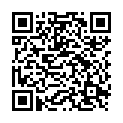|
|
|
| Module code: KI646 |
|
4V (4 hours per week) |
|
4 |
| Semester: 5 |
| Mandatory course: no |
Language of instruction:
German |
Assessment:
Students assignment and presentation
[updated 08.05.2008]
|
KI646 Computer Science and Communication Systems, Bachelor, ASPO 01.10.2014
, semester 5, optional course, non-technical
PIBWN10 (P221-0120) Applied Informatics, Bachelor, ASPO 01.10.2011
, semester 5, optional course, not informatics specific
|
60 class hours (= 45 clock hours) over a 15-week period.
The total student study time is 120 hours (equivalent to 4 ECTS credits).
There are therefore 75 hours available for class preparation and follow-up work and exam preparation.
|
Recommended prerequisites (modules):
None.
|
Recommended as prerequisite for:
|
Module coordinator:
Prof. Dr. Klaus Huckert |
Lecturer:
Prof. Dr. Klaus Huckert
[updated 01.04.2003]
|
Learning outcomes:
After completing this module, students will be acquainted with the basic terminology of music and music formats.
They will understand the relationship between music and computers, will have met relevant examples for web applications and will understand the relationships between the data formats MIDI, MP3, WAV and XML.
[updated 13.03.2007]
|
Module content:
1. The notation used in the graphical representation of music
2. Midi: basics, messages, applications
3. MP3 and WAV formats, rendering
4. Sequencer software (Cubasis)
5. Notation software (Finale, Sibelius), interfacing to Midi and sequencers, XML representation
6. Software for musical arrangements (automatic accompaniments, creating new melodies and solos) with the software package ‘Band in the Box’
7. Production of a CD (recording, mixing and burning)
8. Use in web applications
[updated 08.05.2008]
|
Recommended or required reading:
To be announced during the course.
[updated 13.03.2007]
|
Module offered in:
SS 2014,
SS 2013,
SS 2012,
SS 2011,
SS 2010,
...
|


